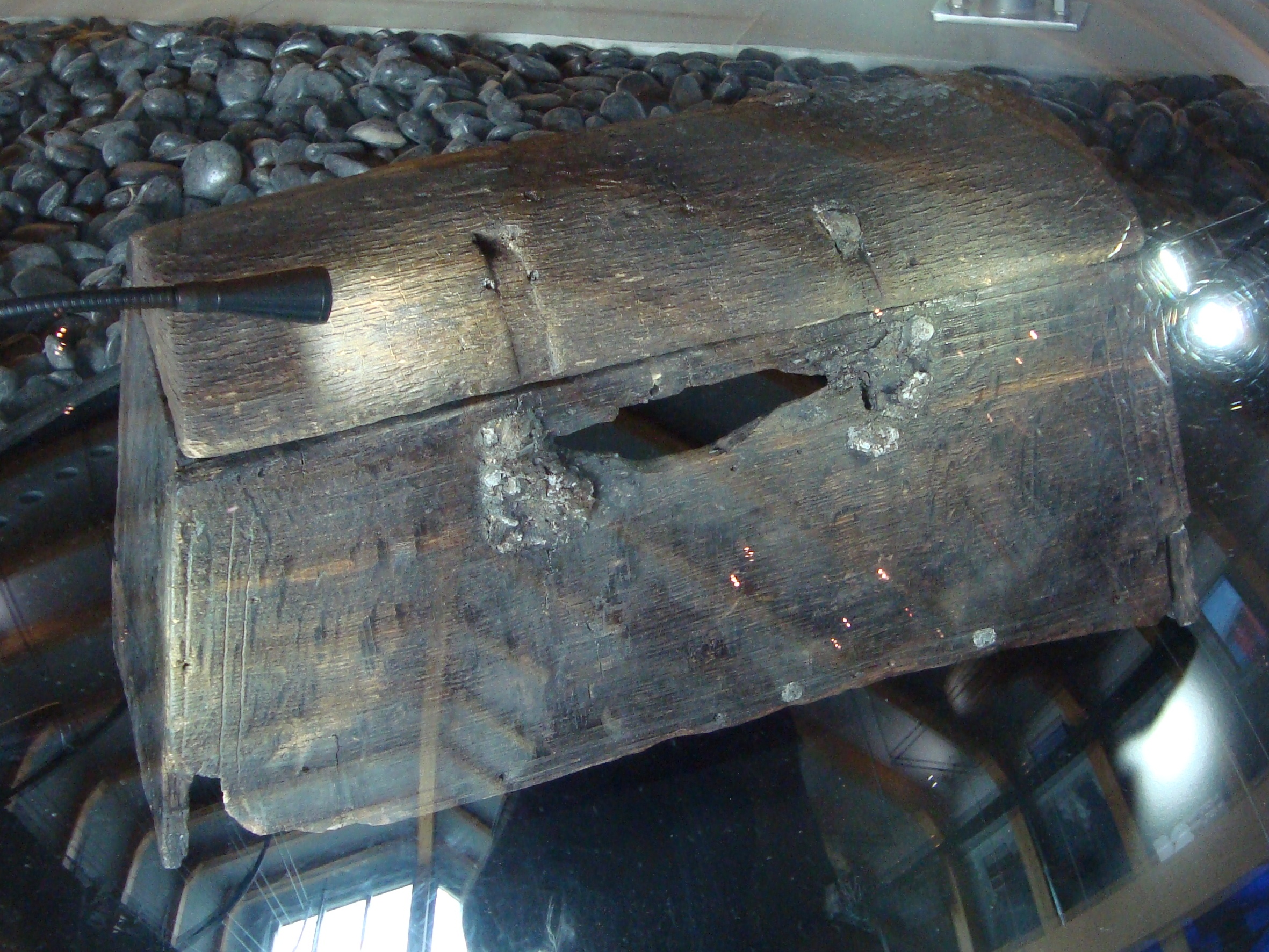All three original chests are made of oak. None of the sources list any particular type of oak. We can assume as North American woodworkers that our white oak (Quercus alba) would be closest in appearance and mechanical properties to sessile oak (Quercus petraea), the common oak of the old world. This video will show you how to compare the properties of different woods if you would like to use a different species.
It’s entirely possible to build the chest from pre-surfaced lumber (sold as s4s, or surfaced 4 sides). The big box stores sell poplar and red oak in addition to pine as “dimensional” lumber. perhaps other woods – I’m in central PA, so your stores may be different. Dimensional lumber from the home center is sold by nominal size. A one by six is actually ¾’s of an inch by 5 ½ inches. Keep this in mind when you are sizing your chest. If you have a local lumberyard (not a builder’s supply place, but a real hardwood lumber dealer) you may be able to find other species sold s4s.
If you want to purchase rough-sawn wood and surface it yourself, you should know that rough lumber is sold via a volumetric measure called “board-feet.” A 12” wide board that is 1” thick is one board-foot per foot of length. Other sizes will vary in how many board-feet per linear foot, but it comes out to 144 cubic inches of wood per board-foot. Also, standard thicknesses are expressed as quarters of an inch. A board that is nominally 1” thick is sold a 4/4, or four quarters. A two-inch thick board would be 8/4 and so on. I have never been to a lumber dealer that had less than 4/4 stock, although they may have thinner stuff surfaced (usually sold for drawer sides). Lumber yards that surface some of their stock on 2 faces (S2S) generally plane the wood down to about 7/8″, but still charge the piece at the 4/4 price.
Cuts of hardwoods – plain sawn vs. rift. vs quarter-sawn
There are also grades of hardwoods that are a measure of the amount of clear (no knots or checks) wood in the board on the best face. Generally, the most expensive is FAS (Firsts And Seconds) which will have the highest % of clear, knot or check free wood. Some lumberyards will carry #1 or #2 common, which can have a significant percentage of flaws – up to 50%, but can be very nice “character” wood. If you go to a lumberyard, be prepared to admit your ignorance, and ask for help. If it’s the kind of place where you can sort through a stack of lumber to find just the boards you want, please be considerate and re-stack the pile after you’ve pulled your boards.
Finally, the most authentic method to make one of these chests is to find a freshly-felled log of oak, and rive (or split) out billets that you would then plane down into boards to make the boxes. For a zealot’s outlook on this process, see this blog article for an outline of the process and some reasons why this would be the best wood to use.
If you want to make your chest larger than the boards you have available, you will have to edge-glue two or more boards together to make the raw material for construction. This is a bit of a specialized task, but just requires that you have a way to make a square, smooth edge and lots of clamps.
For fasteners, the Mästermyr chest is held together with wooden pegs, and the Oseberg chest is nailed together. Hardwood dowels for pegs are pretty easy to find, but check and make sure they are sized correctly. If they are a little small, they won’t have any holding power, if too large you may split your boards when you pound them in. Best to drill a test board, and take that to the store with you to check the size range before you buy. Reproduction period nails are available here or here.
There are several blacksmiths both in and out of the SCA who make reproduction hinges for Viking chests. Here is one source – scroll to near the bottom of the page.

